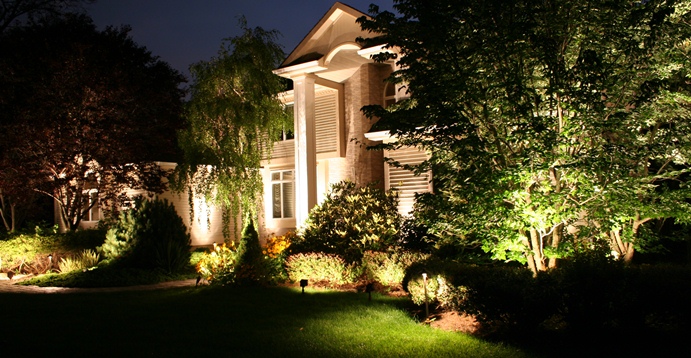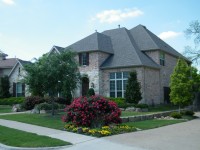Pros of the landscape lighting
Installing landscaping lights will not only improve the look of your garden and make it more soft and magical for the evening and night time, draw attention to the certain parts and decor elements of your landscape (for instance, statues, fountains, mosaic walkways, crowns of trees, porch or patio). It will also result in a couple of useful functions. Of course, landscaping lights transform the whole image of the garden and the house. it may highlight the objects and the spots you need or want to be more visible and hide the parts you don’t want anyone to see during the night. Experimenting with placement, types of lights, the illumination tone and color is always a good idea, especially if you’re familiar with electrical work and know how to install this or that type of landscape lights, combine different features in order to achieve a more interesting design while sticking to the electrical safety rules.
You may install small lights along the walkways in your garden and driveway in your front yard. It’s also good to light up the front porch of your house just a little bit. Installing the lights above your patio will provide you with long and calm summer evenings by the fire. You may even take it to the next level and complement the main landscape lighting by decorating the trees and bushes in your garden and front yard with small lights to make them look like they’re floating. This will also ensure a subtle, a little bit subdued effect everyone will enjoy. And, this will make your plot stand out if compared with other houses in the neighborhood.
If you have some artificial decorative elements in your landscape, you may totally go for the spot lights to make them stand out among the natural pieces even at night. Why should they remain hidden in the darkness, right? And, the water in a fountain or in a waterfall, illuminated with the soft, blue-toned and barely visible landscape lights will glow and tune up immediately. And what about installing the lights along the roof’s and houses edges, on top of the balconies’, porch’s and veranda’s railing?
Basically, you may transform the entire look of your landscape and design its completely different night version without introducing any significant chances. Just add the landscape lighting and you won’t recognize your garden and front yard after the sun goes down.
But, aside from their decorative role, landscape lights are obviously extremely useful for your night vision. If you like to spend your evenings while having dinner or late talks with your friends and family, or if you want to organize a late night party or even if you just need to pop out into the garden to let your dog do its business, you’ll appreciate the fact that you took your time to install the landscape lighting. And, as many security professionals note, a well-light landscape and house scare away the intruders, as it becomes much more difficult for them to enter the house while remaining invisible. Which, by the way, increases your chances to notice such unwelcomed guests even if they attempt breaking in under the lights. So, it’s quite beneficial to hire an electrician and install a couple of lights along the driveway and around the house (concentrating on front and back entrances). Lighting up potential hiding places like bushes will decrease the burglar’s chances to escape or secretly watch the house. Sensor landscaping lights, which light up when someone walks pass them serve the security matters the best.
So, it’s quite possible to combine the three functions of yard lighting I’ve mentioned and install them at the most used and the most necessary places. But, first of all, you have to develop a ‘lighting plan’ for your landscape, choose the best lights, which will meet your requirements and either hire an experienced electrician to get them installed or attempt doing that on your own. If you choose the last option, you will need to learn how to install landscape lighting properly, as personal safety is the most important in this DIY outdoor lighting project.
The best outdoor lighting – 3 main options
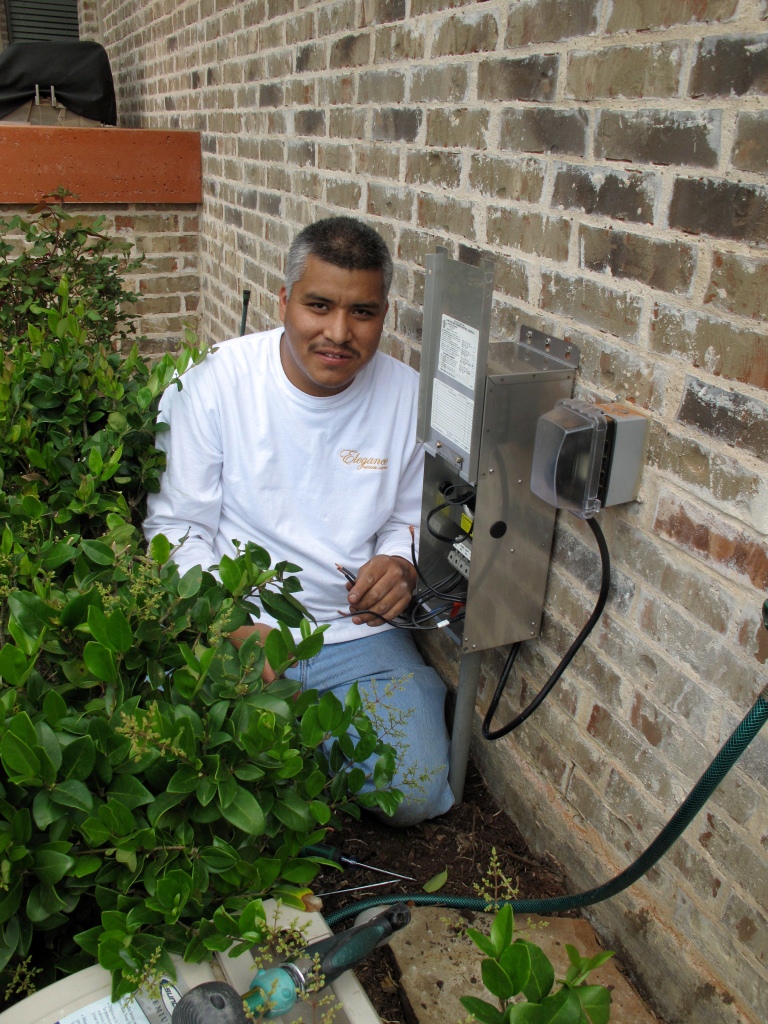 The first type of lights you may choose to get is ordinary high-voltage ones that provide the brightest lighting possible. Those are the post lights, which require quite a serious preparation and electrician’s skills to install. First of all, you can’t set them up without digging a trench for the underground electrical line to power these lights. For instance, if you plan on installing several 120 volt landscaping lights, you should prepare an 18-inch trench to protect the cable from water or encase it.
The first type of lights you may choose to get is ordinary high-voltage ones that provide the brightest lighting possible. Those are the post lights, which require quite a serious preparation and electrician’s skills to install. First of all, you can’t set them up without digging a trench for the underground electrical line to power these lights. For instance, if you plan on installing several 120 volt landscaping lights, you should prepare an 18-inch trench to protect the cable from water or encase it.
Secondly, you’ll have to mess with your house outlet in order to connect the light’s cable to it. Then, you’ll have to connect each of the lights to that voltage line. And that’s quite dangerous, as an inexperienced person may damage the wrong wires and cause the short circuit, putting his life in danger and even causing the so-called electrical fire in the worst-case scenario. Making sure that the lights you’re willing to install won’t overload your houses’ circuit they’re going to be tied into is extremely important preparation step, which helps avoid such incidents.
As you can see, installing such outdoor lights requires a lot of professional knowledge and skills. That’s why you should hire an electrician to get them set up. Visit HireRush.com to find a local professional and contact him directly from the site.
But, there’re also a couple of DIY options of outdoor lighting you may check out. Those are low-voltage landscaping lights or spotlights and solar lighting. However, the latter one won’t suit every household, even though it doesn’t require any cables to function.
The low-voltage lights are the perfect DIY option. They’re not too difficult to install, they won’t boost your electricity bills like crazy and they’re still able to do the perfect job lighting up the areas and highlighting the landscape items. And, it’s also possible to choose the color temperature (blue, white, natural, yellow) and the type of lights you prefer the most by purchasing according bulbs (LED, halogen or fluorescent ones). Fluorescent ones are more energy efficient than the halogen ones, but they are also impose a health risk when they break. The LED ones are probably the best bubbles to purchase, as they last longer and provide brighter lighting to larger areas. Moreover, they’re the most energy-efficient ones.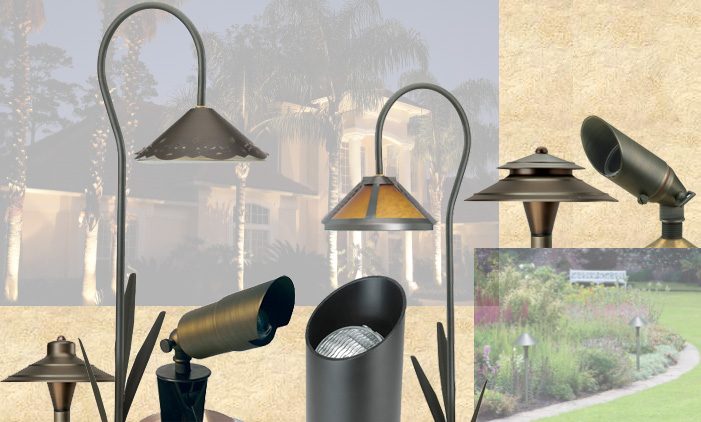
So, once you’ve chosen the kind of lights to purchase and developed a plan on where and how to install the lo-voltage lights in your garden or front yard, follow these instructions to finish the task.
Steps to install the low-voltage landscape lighting
- Go to the store and purchase the light fixtures, bulbs, a 12or 16-gauge cable (for more and less than 200 watts systems accordingly), a power pack and a direct burial splice connector. You’ll also need wire cutters and strippers, a shovel with a flat blade, a screwdriver and a pair of the work gloves.
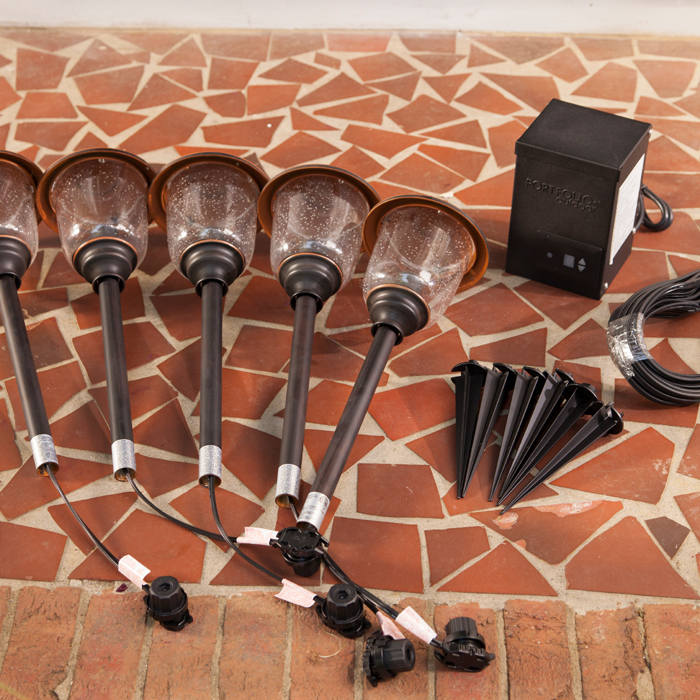
- Attach a GFCI outlet to the outside of your home. A transformer (power pack) should be placed near it too. Another option is to have it attached to the wooden post, driven into the ground close enough to the outlet. Don’t plug it into the outlet just yet.
- Put the light holders together according to the manufacturers’ instructions and minding the voltage levels your power pack is able to sustain. Add the bulbs.
- Start installing the light fixtures into the ground according to your landscape lighting plan. Take a trowel to create hole for each post and a narrow trench (just a cut in the ground) to conceal the cables later on. Try to place them the way that they appear hidden behind the landscape elements (like stones, bushes) if you want to achieve a muted and appealing effect. Keep them visible if you’re aiming at bright outdoor lighting.
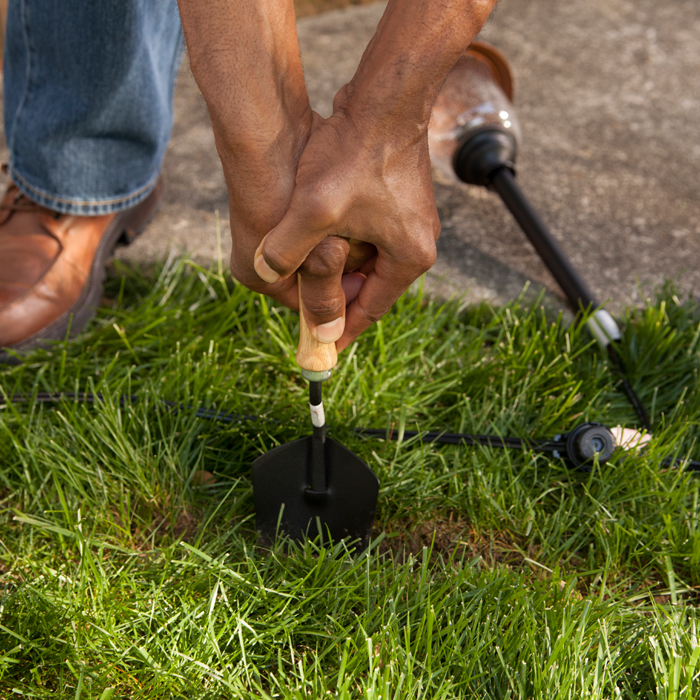
- Dismount the power box (transformer) and lay it on the ground. Run its cable to the lights and connect it with the cables of every single fixture you’ve just mounted. Use the cable connectors (splicers) for that matter.
- When all lights are ‘tied’ with the main cable, run it back to the power box to connect the cable to it. One of the wires that come from each run should be connected to the common terminal, and the other one will be tied to the 12 volt tap terminal.
- Finish the job by checking the landscape lighting layout you’ve just created, concealing the cables, mounting the transformer onto its post or to the wall near the outlet, plugging it into the outlet and turn the lights on.
